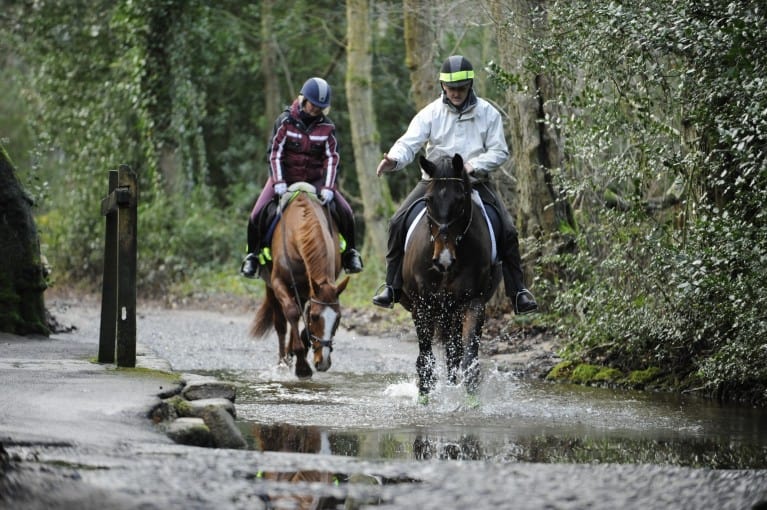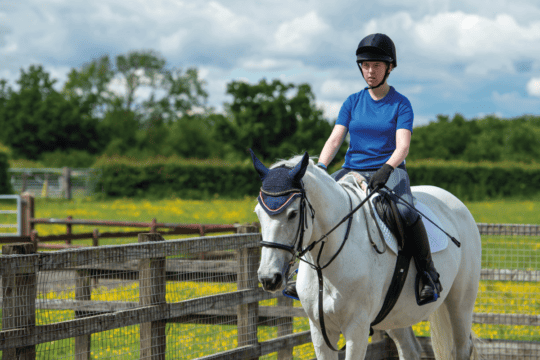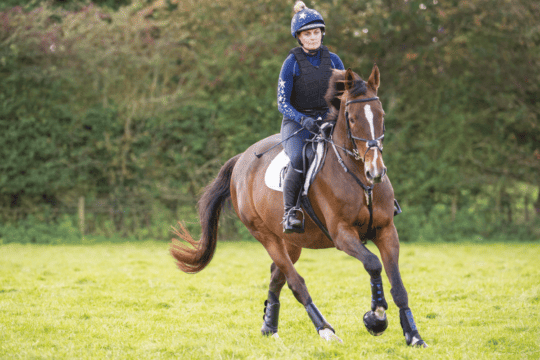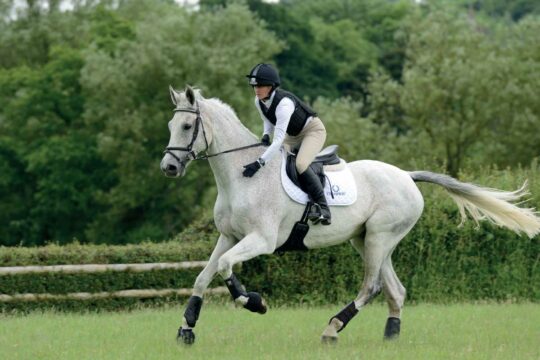Featured Professional

Michael Peace
The 'Problem Horse Trainer', Michael Peace specialises in a natural approach to training difficult horses.
Everything is going swimmingly, until you ask your horse to step into water. Michael Peace shows you how convince your horse to dip his toes

We’ve reached a big puddle and Romeo doesn’t like it! His attitude is different. Before, he was just waiting to disagree, but as soon as I asked him to move on in the appropriate way, he did. Now he’s saying emphatically, “No, I’m not doing it!”
He has gone from angry and irrational into full evasion – he’s mentally trying to block me. This is good because it’s easier to work with than when he’s irrational – whatever he comes up with, I can counter.
He’s changed the way he’s evading, too. Before, I had to get his front end moving in the right direction, but now he’s raised his head and fixed his front end, while fidgeting his back end around, so I need to control his hindlegs.
I want him to step to the right with his hindleg. Therefore, I’ve opened my right hand and have my right leg up ready to give him a bump behind the girth to get his quarters over, so he’s moving forward.
Top tip
“It’s quite normal for horses to switch from one evasion to the other – just keep your cool and ride them accordingly.”
Once I have dealt with all his evasions, several times, Romeo concedes that he’ll go through the water. His head drops, I part my hands so he can move on through them and we relax, with him saying, “It’s fine, it’s just a job.”
There has been no battle, no flailing around, it’s all been very rational: “If you do this, I’m going to do that.” I’ve given Romeo a level playing field and when he does what I want, I’ve made it far easier for him.
From a driving position, once he’s moving, I stay as light as possible, leaning forward or up out of the saddle so he can really feel the contrast between that and when he’s being ‘sticky’.
Exaggerated riding style
Riding a nappy horse the way I do in this feature doesn’t look very tidy and you’d not want to ride like this forever, but it’s effective. Even a rider like Mark Todd makes similar, quite obvious movements if he’s, say, approaching a fence on the wrong leg.
If a horse is well-schooled and everything is fine, you can look pretty and make tiny neat movements. When the horse needs exaggerated explanations – when he’s really saying ‘no’ – you need exaggerated movements.
Initially, I ride youngsters with big, obvious statements – they won’t understand movements if they’re too subtle, but that quality can be built gradually as they are schooled















